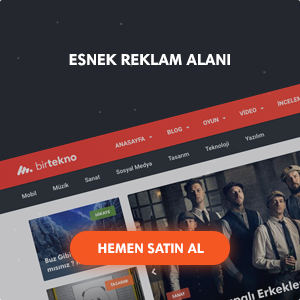Sitemize üye olarak beğendiğiniz içerikleri favorilerinize ekleyebilir, kendi ürettiğiniz ya da internet üzerinde beğendiğiniz içerikleri sitemizin ziyaretçilerine içerik gönder seçeneği ile sunabilirsiniz.
Zaten bir üyeliğiniz mevcut mu ? Giriş yapın
Sitemize üye olarak beğendiğiniz içerikleri favorilerinize ekleyebilir, kendi ürettiğiniz ya da internet üzerinde beğendiğiniz içerikleri sitemizin ziyaretçilerine içerik gönder seçeneği ile sunabilirsiniz.
Üyelerimize Özel Tüm Opsiyonlardan Kayıt Olarak Faydalanabilirsiniz

Sıradaki içerik:
Bir Şehir Efsanesi: Thin Client’sız VDI Projesi Olmaz!
- Anasayfa
- Bulut Sistemleri
- Comprehensive Comparison: Cloud vs On-Premises vs Hybrid-Cloud Solutions
Comprehensive Comparison: Cloud vs On-Premises vs Hybrid-Cloud Solutions

Each year, two topics become increasingly important: Communication Technologies and Computing. Especially during the pandemic, these fields continued to grow, and nearly no company in the sector suffered losses. We are fighting in an arena that began with traditional servers and evolved into hyper-converged architectures. Companies like VMware, Citrix, and Nutanix have developed hypervisors that revolutionize server technologies. Initially, we virtualized servers on an operating system, then we created virtual machines with different operating systems on these virtualized servers and managed them according to the hypervisor rules we used. During this period, cloud technologies advanced to the point of providing services in a microservices architecture. Meanwhile, container technology developed, and we began to talk about Docker and Kubernetes. Although we can use these technologies in On-Prem environments, we primarily turned to hyperscalers. Recently, the debate has grown: some people defend traditional architecture, saying, “Why do we own it? We use as much as we need and move when we want,” while others say, “I will set up my own cloud infrastructure, create my services, and even become a local provider.” Some prefer a hybrid solution, saying, “I use Cloud or On-Prem as needed to maximize performance.”
Advantages and Disadvantages of Cloud Technologies
Many large companies worldwide prefer cloud infrastructure. This is a significant reference because these large companies are managed by experienced and extensive teams that analyze not only technical and sustainability aspects but also cost analysis. Understandably, no one would make a choice that results in losses, especially large organizations.
Advantages:
- Upfront Cost: Almost nonexistent, and when present, they are negligible. The provider is responsible for the infrastructure, and the customer pays only for what they use, either monthly or annually. Financially, this model is called pay-as-you-go. There is no need for a technical team to manage the infrastructure; mostly, consultancy is obtained from the firm providing the service or a company proficient in these services. A technical team means the company has to consider, manage, and bear the costs, starting from human resources to employer costs.
- Setup: Since the setup of applications or data processing occurs outside the company, all responsibility, from 24/7 support to the financial losses caused by any outages, falls on the provider. This reduces the workload on the company by transferring it to the provider.
- Data Security: Over the years, cloud providers have proven themselves in data security and have become compliant with some global regulations. Communication is ensured by a shared key between the customer and the provider. For some, this is a security measure; for others, another company knowing these data is a security breach. To question whether it is easier to infiltrate the company’s internal systems room or a cloud provider, you can find the answer.
- Accessibility: Because they have data centers in multiple locations, in case of an interruption or disaster, you can continue to receive service from another point without almost any interruption.
- Initial Cost: In Cloud, there is no such issue; since you pay for what you use, you can stop and resume whenever you want. This gives you freedom; additionally, instead of paying 500k USD at once, you can continue your operations by paying 5-10k USD monthly.
- Company Needs: While scaling, you always consider the company’s current needs. You don’t have to pay for unused resources or keep excess capacity. You grow as much as you pay.
Disadvantages:
- Long-term Cost: Ownership costs provide a price advantage in the long run. This is because everything in the cloud needs to be the latest version, including hardware. This incurs costs for the provider, who applies pricing policies accordingly. For example, you can rent a car worth 600K for 15K per month from a fleet company for 36 months. However, you can own the same car by paying 15K monthly in 40 months, but unfortunately, this is not possible. You need to make an upfront payment for a part of the car price. If you say you will use this car for 46 or even 56 months, owning it will be the best choice.
- Customization: Cloud providers’ infrastructures are built to industrial standards, almost all following similar configurations of different manufacturers. This is because they serve not just one but a thousand people. In internal company infrastructure, customization is done directly to meet company needs.
- Regulations: Especially if you are working with public institutions, they never warmly welcome cloud technology; they only started discussing and transitioning to Office 365 in recent years. Countries have internal audits to ensure company data is not stored or processed by third parties. While private companies have more flexibility in this matter, financial institutions and public bodies must keep all infrastructure On-Prem.
- Company-specific Applications: Many company-specific applications are not supported on the cloud. Therefore, investing in On-Prem allows companies to host and distribute their applications on better resources.
- Search Warrants: If your company faces a serious lawsuit and a search warrant is issued against you, you may need to share some electronic equipment with law enforcement. If you use the cloud, this is almost impossible; you cannot tell law enforcement to “go ask for the disk at … data center.” This might sound like an advantage, but it is a disadvantage and can be used against you. Therefore, if you are storing certain documents on cloud services, you must complete some legal prerequisites in writing beforehand.
- Internet Access: One of the biggest advantages of On-Prem, which may sound funny, is instant intervention. You might say, “Is there any place without the internet anymore?” but if your international exits are closed or bandwidth is restricted due to any “order,” accessing cloud services becomes difficult.
- Swelling Costs: While using cloud services, especially in storage, you set some rules, and the service grows as needed without asking you. To scale and measure this, an expert needs to apply certain policies. Otherwise, you might wake up one morning and see that you have reached your monthly consumption cost overnight.
Advantages and Disadvantages of On-Premises Infrastructures
The configurations specific to companies, called classic architecture, are known as On-Prem. Generally, companies work with consultants with specific expertise rather than building large IT teams to manage these structures end-to-end. Despite the increase in infrastructure sales, On-Prem structures began to shrink, especially in 2020 with the pandemic. There is a past study related to this – I am leaving the link below – most IT managers of companies with On-Prem structures have either completely transitioned to Cloud or are evaluating hybrid solutions.
Advantages:
- Customization: The infrastructure can be designed precisely to meet the customer’s needs. The customer decides which manufacturer to work with, which software to use, and how to use it. They have tangible hardware. The importance of this is not taking selfies in front of the servers but distributing certain company-specific applications in the company’s standards.
- Ownership or Leasing, That is the Question: In On-Prem structures, licensing is usually done directly to the hardware or in the name of an individual within the company as perpetual licenses.
- Security: Although this topic is open to debate, the security of applications and data within the company is considered stronger. The reason is the ability to use additional applications for security within the company, logging who did what and when. Let’s not keep this theoretical; cloud companies obtain a bunch of certificates and undergo specific audits to ensure security. Don’t think “since it’s under our hand,” ensure your security measures. Security is good.
- Management Without Internet: On the cloud side, you need to access a console over the internet, while on-prem, it is an internal network structure that you can intervene with at any moment.
Disadvantages:
- Setup: Long setup times are the bane of On-Prem. Things may not always go as planned; a 4-hour setup can take 14 hours. Problems might need resolving, version mismatches can occur, and sometimes physical reasons can delay the completion. Testing stages usually take long, etc.
- Scalability: Unfortunately, it cannot be as flexible as cloud infrastructures in scalability. For example, in a situation where the number of users of the application needs to increase, the IT team needs to manually set up or change the hardware. Similarly, when an application or hardware needs updating, the IT team needs to start the process, which can even take months.
- Investment: When you say, “I’m getting into this,” you need to start with a significant investment, and server investments are typically calculated for 5+ years (including the annual growth rate). This means you need to make a hefty investment upfront. If the company’s growth/shrinkage rate is not constant, and if it is a company that can make purchases or regional changes at any moment, on-prem is entirely a disadvantage.
- Data Loss: Data is the most valuable thing; it is the backbone of companies. Data losses damage the reputation of companies. Pay attention; many backup/storage companies have been shouting about RANSOMWARE for the last three years, have you wondered why? Most ransomware attacks occur in on-prem structures, and usually, backups are taken on another server in the same cluster or even on the same server (actually taking a snapshot). A real backup is taken off-site on a backup site outside the cluster structure. However, the number of companies acting this way is very few. In cloud structures, continuous backups are made, allowing you to return without any data loss.
- Audits: If you are in a country with high audit rates, the structures that are outside the company’s internal structure can be subjected to audits. This is particularly challenging for cloud services since the data can be located in a different country, leading to jurisdiction issues.
Hybrid-Cloud Solutions
Hybrid-Cloud solutions combine the benefits of both Cloud and On-Prem infrastructures, aiming to provide a balanced approach. This model allows companies to keep critical data and applications in their own data centers while leveraging the scalability and flexibility of Cloud services for other workloads.
Advantages:
- Flexibility: Hybrid-Cloud provides the flexibility to scale resources based on current needs. Companies can keep their sensitive data on-premises while using the cloud for less critical tasks.
- Cost Efficiency: By combining on-premises and cloud solutions, companies can optimize costs. They can utilize the cloud for temporary or variable workloads, reducing the need for expensive on-premises infrastructure.
- Business Continuity: In case of a disaster, hybrid-cloud solutions ensure business continuity by allowing workloads to be shifted between on-premises and cloud environments seamlessly.
- Performance Optimization: Companies can choose where to run their applications based on performance requirements. Latency-sensitive applications can be run on-premises, while less critical ones can be moved to the cloud.
- Compliance: Hybrid-Cloud can help meet regulatory requirements by keeping sensitive data on-premises while still benefiting from cloud services.
Disadvantages:
- Complexity: Managing a hybrid-cloud environment can be complex and requires skilled IT staff. Integrating and maintaining compatibility between on-premises and cloud systems can be challenging.
- Security: While hybrid-cloud offers flexibility, it also introduces security risks. Data transfer between on-premises and cloud environments needs to be secure, and maintaining consistent security policies across both environments is crucial.
- Cost Management: Although hybrid-cloud can be cost-effective, managing costs across different environments can be difficult. Companies need to carefully monitor and optimize their spending.
- Vendor Lock-In: Relying on multiple vendors for hybrid-cloud solutions can lead to vendor lock-in. It’s essential to ensure that the chosen solutions are interoperable and do not create dependencies on specific providers.

Choosing the Right Model
When deciding between Cloud, On-Premises, or Hybrid-Cloud, companies should consider their specific needs and circumstances. Key factors to evaluate include:
- Budget: Evaluate the initial and long-term costs associated with each model.
- Scalability: Determine how much flexibility and scalability are required.
- Security: Assess the level of security needed for your data and applications.
- Compliance: Consider any regulatory requirements that must be met.
- Technical Expertise: Ensure that your team has the necessary skills to manage the chosen infrastructure.
In conclusion, there is no one-size-fits-all solution. The choice between Cloud, On-Premises, and Hybrid-Cloud depends on the unique needs and goals of the organization. Each model has its advantages and disadvantages, and a careful evaluation of these factors will help in making the best decision.
- Site İçi Yorumlar
Hızlı Yorum Yap


















Yorum Yaz